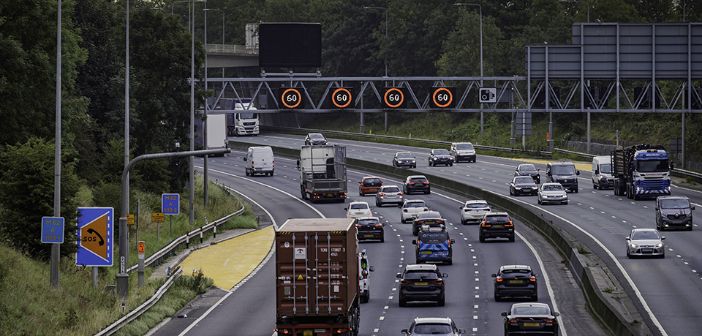Every new all-lane running (ALR) motorway will open with technology in place to spot stopped or broken-down vehicles quickly, while all existing ALR motorways will have the technology fitted six months earlier than originally planned.
The pledge comes as Highways England publishes the smart motorways stocktake progress report 2021 setting out the progress it has made against an action plan published last year to boost safety and backed by a £500m investment. The progress report includes commitments to speed up the completion of safety measures, as well as the latest safety data.
ALR motorways – which don’t have hard shoulders – are fitted with technology and features not seen on conventional motorways, such as set-back emergency areas, and red X signs on gantries to close live lanes. Radar detection to spot stopped vehicles is also being rolled out.
To accelerate improvements, by the end of September 2022, Highways England said it will install radar technology on all existing stretches of ALR motorway six months earlier than planned; upgrade special cameras 10 months earlier than planned, so that they can be used to spot and prosecute motorists ignoring red X signs and illegally driving down closed lanes, putting themselves and others in danger; and install around 1,000 additional approach signs six months earlier than planned, alerting drivers to their nearest place to stop in an emergency.
Work to update the Highway Code to provide more guidance about driving on ALR motorways will also be bought forward and is due to be published this year, ahead of schedule.
According to data from the progress report, covering the five years from 2015 to 2019 inclusive, ALR motorways are reportedly one of the safest types of road in the country, with drivers on a conventional motorway said to be 33% more likely to be involved in a fatal accident than drivers on an ALR motorway.
The data also demonstrates that the fatality rate on strategic road network A roads is three and a half times that on ALR motorways.
The figures have been compiled on a five-year basis because single-year figures are too low, and fluctuate too much to draw conclusions from. For 2019, there were nine fatalities on ALR motorways, one less than in 2018, and a total of 15 fatalities on motorways without a permanent hard shoulder, four more than in 2018.
The increase in fatalities in 2019 was accounted for by so-called ‘dynamic hard shoulder’ motorways, where the hard shoulder operates only part-time. All these motorways are being withdrawn and replaced with ALR motorways.
UK transport secretary Grant Shapps said: “Despite the data showing that fatalities are less likely on ALR motorways than on conventional ones, this doesn’t mean all drivers necessarily feel safe on them.
“That is why I tasked Highways England last year with delivering an action plan to raise the bar on safety measures even higher. This progress report shows the extensive work already carried out, but we want to do more.”
Work has also been completed to make emergency areas more visible along with improved signage, and radar technology is now being rolled out along sections of ALR motorway across the country. Additionally, Highways England and the Home Office have continued work so motorists who drive along lanes closed by a red X can be caught and prosecuted.





